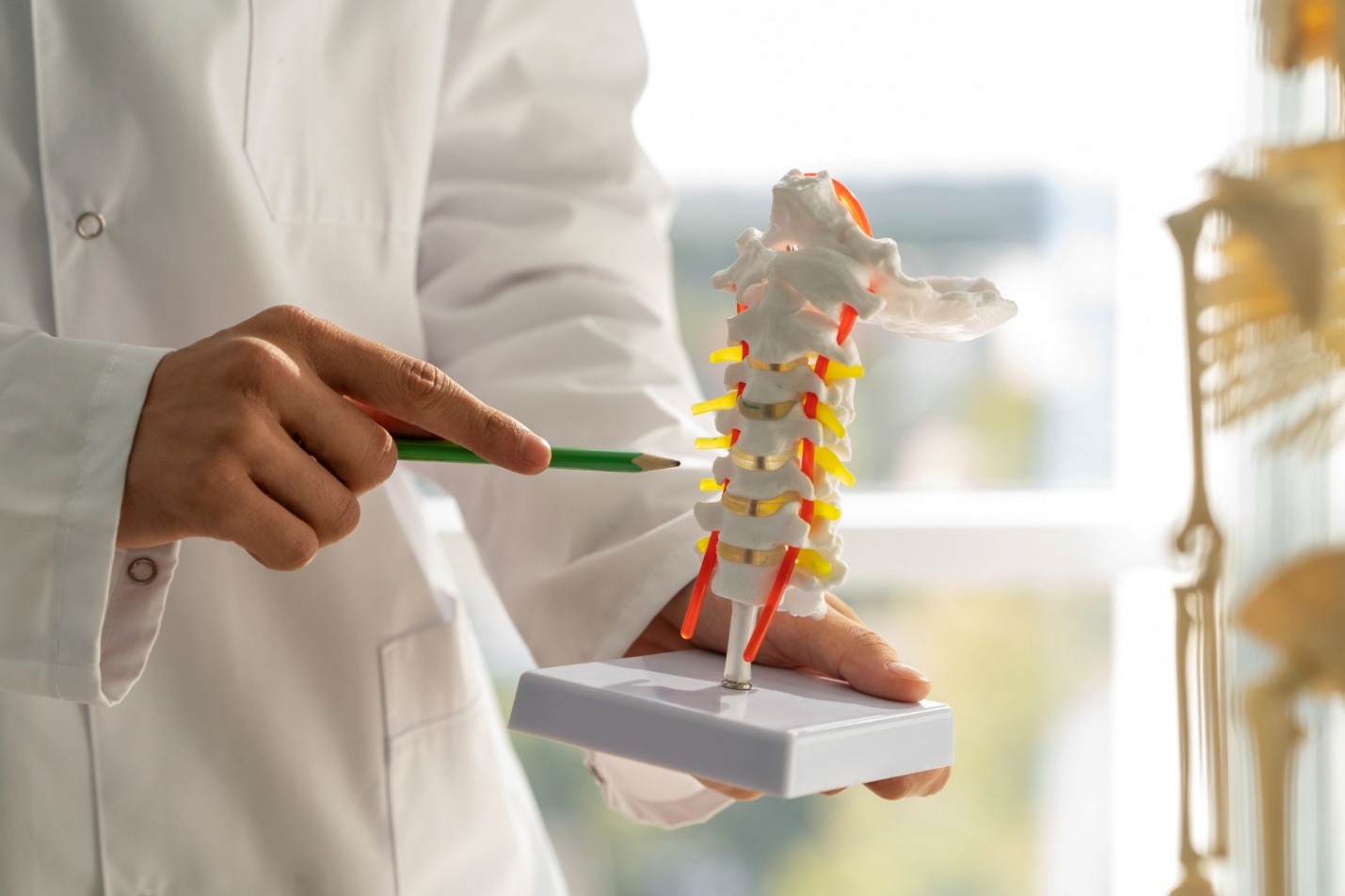
Dealing with a Broken Tailbone: Symptoms and the Road to Recovery
You may not give much thought to your tailbone until you’re forced to, like when you’ve fallen or experienced a sudden impact on your lower back. This small but essential bone, the coccyx, plays a significant role in your body’s stability, especially when sitting down.
The tailbone, or coccyx, is at the bottom of your spine. Although it may seem like a small, insignificant bone, it’s quite the opposite. The coccyx is an anchor for several muscles, tendons, and ligaments crucial for maintaining your posture, supporting your body when you sit, and facilitating movements like standing up. It consists of three to five vertebrae that fuse during adulthood.
Whether you’ve recently experienced a fall, have sharp pain at the base of your spine, or just want to know more, it’s important to distinguish between a broken vs. bruised tailbone. Both injuries come with symptoms and treatment options; knowing which one you’re dealing with can help you manage pain and recover properly.
How Do You Know If You Have a Broken Tailbone?
A broken tailbone, or coccyx fracture, is often tricky to diagnose since its symptoms overlap with those of a bruised tailbone or a pulled ligament. Pain is typically the primary symptom, but the intensity and nature of this pain can vary significantly from person to person.
You might experience a dull ache or constant discomfort in the lower back, right above the buttocks. This pain often intensifies when you sit down or rise from a seated position. The discomfort can be particularly sharp if you’re dealing with a fracture, whereas a bruised tailbone may cause more general soreness.
Also, the pain could increase during activities like bowel movements, sexual intercourse, or prolonged sitting. If you notice any numbness or tingling in your legs, it’s a sign that the injury may be affecting the surrounding nerves.
At this stage, it’s important to distinguish between a broken and a bruised tailbone. While both injuries share many of the same symptoms, an actual fracture may present more severe pain and take longer to heal.
An X-ray can help confirm whether the tailbone is fractured or simply bruised, but it’s not always necessary unless the symptoms are severe.
What Causes a Broken Tailbone?
Here are some common causes of a broken tailbone:
- Landing directly on the tailbone from a backward fall onto a hard surface.
- High-impact sports like contact sports or cycling.
- Weaker bones in older adults, particularly in those with osteoporosis
- Childbirth
- Repetitive stress
- Car accidents or direct blows to the tailbone area.
- Infection in the coccyx area.
- Degenerative disease
- Tumors near the coccyx
How to Treat a Broken Tailbone
Unlike other bones, the tailbone cannot be put in a cast, so recovery mainly focuses on managing the pain and allowing the bone to heal independently. For mild fractures or bruises, the following treatments can be helpful:
- Pain relief: Nonsteroidal anti-inflammatory drugs (NSAIDs) like ibuprofen or acetaminophen can help reduce inflammation and ease the pain. For more severe pain, more potent medications or prescription painkillers may be necessary.
- Hot and cold therapy: Applying ice packs during the first few days can help reduce swelling, while heat pads can ease muscle stiffness once the acute phase has passed.
- Cushions: Specially designed cushions with a cut-out hole in the center are ideal for sitting without putting pressure on the injured tailbone.
- Posture: Good posture is key during recovery. Avoid sitting for extended periods; when you must sit, use a cushion to relieve pressure on your coccyx. Standing desks can benefit people who work long hours at a desk.
- Surgery: In rare cases with severe and persistent pain, coccygectomy (the coccyx removal) may be recommended. However, this is usually a last resort when all other failed treatments have been tried.
What the Recovery Process Looks Like
Recovery time for a broken tailbone can vary greatly depending on the severity of the injury. In most cases, it can take a few weeks to several months for a fractured coccyx to heal completely.
During this time, avoiding pressure on the tailbone is crucial. For example, rest is essential, but gentle exercises may also be recommended to strengthen the muscles around the coccyx and prevent tightness or imbalances from developing.
Some doctors may suggest a physical therapist who can guide you through exercises specifically designed to target the pelvic floor and hip muscles. These exercises help improve flexibility and strength while alleviating pressure around the coccyx.

Comments (0)